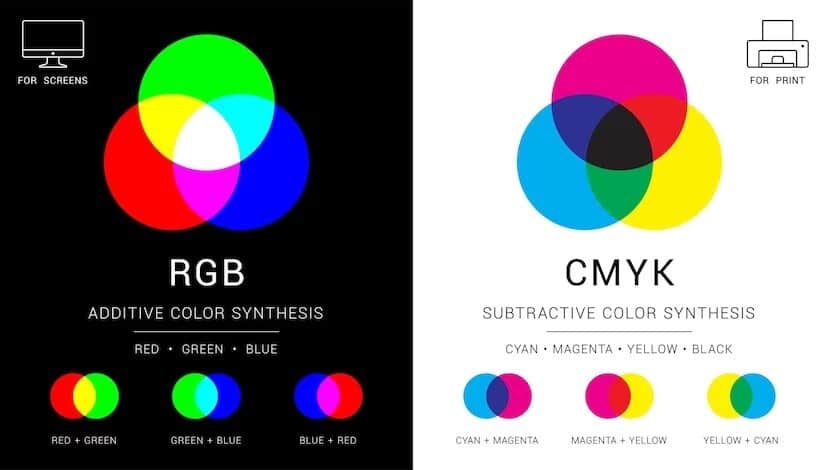RGB vs CMYK – Unveiling the Best Color Models for Packaging Designs
In the realm of packaging design, choosing the right color model is paramount to creating visually appealing and impactful designs. The two primary color models that play a pivotal role in this process are RGB (Red, Green, Blue) and CMYK (Cyan, Magenta, Yellow, Black). Both models serve distinct purposes and are integral to achieving optimal results in packaging designs. In this article, we will explore the differences between RGB and CMYK, and delve into why these color models are crucial for packaging solutions. Additionally, we will highlight the significance of these choices for packaging manufacturers in India.
RGB - Radiant Brilliance for Digital Displays:
RGB is a color model based on the additive color theory, primarily used for electronic displays such as computer monitors, television screens, and digital devices. Comprising red, green, and blue, this model allows for the creation of a vast spectrum of colors by combining these primary colors in various intensities.
When it comes to packaging designs intended for digital platforms or presentations, RGB is the go-to choice. The brilliance and vibrancy of colors produced in the RGB model are ideal for captivating digital audiences. Graphics, images, and illustrations appear more vivid and lively in the RGB spectrum.
However, it's crucial to note that RGB colors are not suitable for print production. The reason lies in the fundamental difference between additive and subtractive color models.
CMYK - Precision in Print:
Unlike RGB, the CMYK color model is based on the subtractive color theory and is specifically designed for print applications. Comprising cyan, magenta, yellow, and black (key), CMYK is the standard color model used by printers to reproduce a wide range of colors on paper.
The subtractive nature of CMYK is essential for achieving accurate color representation in print. When combining the four primary colors, the result is a subtractive process that absorbs light, creating the desired colors on the printed material. This makes CMYK the preferred choice for packaging designs intended for physical products, labels, and packaging materials.
RGB vs CMYK - Making the Right Choice for Packaging Designs:
The choice between RGB and CMYK ultimately depends on the intended output of the packaging design. For digital platforms and electronic displays, RGB is the preferred choice due to its vibrant and dynamic color range. On the other hand, for print applications, CMYK is indispensable for achieving precision and accuracy in color reproduction.
Packaging Solutions Company in India - Navigating the Color Dilemma:
In the dynamic landscape of packaging design, companies specializing in packaging solutions in India face unique challenges. The country's diverse market demands versatile and eye-catching packaging to stand out on crowded shelves. This requires a keen understanding of color models and their applications.
Packaging manufacturers in India must consider the specific requirements of their clients and the intended distribution channels. If the packaging is primarily for e-commerce or digital marketing, RGB colors may be the ideal choice. However, for products that will be displayed in physical stores, CMYK ensures that the packaging design translates accurately from the digital concept to the printed reality.
In the competitive market, a packaging solutions company in India needs to stay abreast of industry trends and technological advancements. With the rise of e-commerce and the increasing importance of visually appealing online representations, understanding the nuances of RGB becomes crucial.
At the same time, packaging manufacturers in India must ensure that their designs seamlessly transition from the digital realm to the physical product. CMYK offers the precision needed for print production, ensuring that the colors on the packaging accurately reflect the brand's identity and message.
Balancing Act - Integrating RGB and CMYK in Packaging Designs:
In some cases, packaging designs may require a combination of both RGB and CMYK elements. This is especially true for brands with a strong online presence and a need for consistent branding across various platforms.
A packaging solutions company in India can leverage the strengths of each color model strategically. Using RGB for digital assets and marketing materials ensures a captivating online presence. Simultaneously, incorporating CMYK for the physical packaging materials guarantees accurate color representation and consistency across print mediums.
The convergence of these two color models requires skillful design and meticulous color management. Designers must work collaboratively with printing professionals to ensure a seamless transition from the digital concept to the printed product.
Conclusion:
In the realm of packaging design, the choice between RGB and CMYK is not a matter of one being superior to the other but rather understanding their distinct purposes. RGB excels in the digital realm, offering vibrant and dynamic colors for electronic displays, while CMYK is indispensable for achieving precision in print applications.
For a packaging solutions company in India, navigating the RGB vs CMYK dilemma is crucial for delivering designs that resonate with the target audience. Packaging manufacturers in India must tailor their approach based on the specific requirements of their clients, the distribution channels, and the nature of the products.
In the ever-evolving landscape of packaging design, embracing both RGB and CMYK allows companies to create versatile and impactful designs that make a lasting impression both online and on the physical shelves. As the market continues to evolve, staying informed about color models and leveraging them strategically will be the key to success for packaging solutions providers in India.
For more information on Ambest Prints and its services, you can explore their official website www.ambest.in or reach out to customer support on +917583004004 or paresh@ambest.in for personalized assistance.
